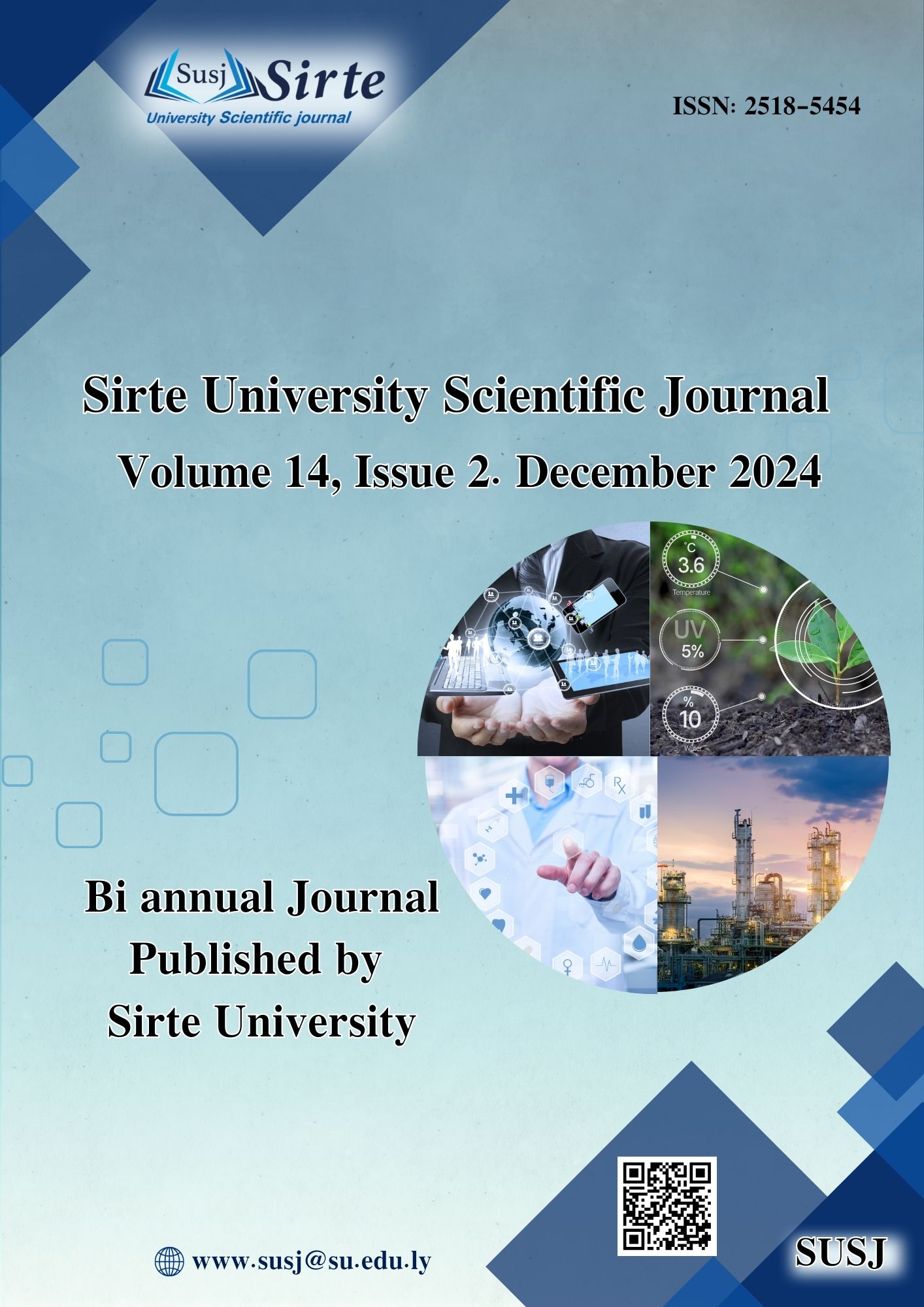Extraction of Aromatic Compounds from Dorema Ammoniacum and Styrax Benzoin Resins Using Maceration Method
DOI:
https://doi.org/10.37375/susj.v14i2.3094Keywords:
D. ammoniacum, α-pinene, carbopol gel, benzoin, Glycerol monostearateAbstract
This study aims to create a perfume using Dorema ammoniacum, Styrax benzoin, and α-pinene. The maceration method in mineral oil was used to extract the aromatic substances from the resins at a room temperature. Both resins were grounded and soaked in mineral oil for three months. The Dorema ammoniacum resin soluble in polar solvents, so aromatic substances were extracted by soaking it in 10% ethyl alcohol for 2-3 days. The top note, α-pinene oil, a monoterpene, was purchased in its pure form and used as is. The weight percentages of the components used to prepare the aromatic formulation containing the carbopol gel are as follows: Dorema ammoniacum (Solution, 10% EtOH) (20%), Benzoin oil extract (10%), D. ammoniacum oil extract (10%), α-pinene oil (5%), Glycerin (5%), α-pinene oil (5%), 2% Carbopol® 940 Solution (5%), Polyoxyethylene sorbitan 60 (6%), Glycerol monostearate (3%), Disodium EDTA (0.2%), Sodium Salicylate (1.5%), and then the completion of the percentage with distilled water. The formulation is prepared with a total weight of 20 grams. The perfume was evaluated for its organoleptic evaluation, such as color, scent, and shape, and was found to have a distinct aroma, liquid consistency, and acceptable shape.
References
Averill, H. P., Roche, J. N., & King, C. G. (1929). SYNTHETIC GLYCERIDES. i. PREPARATION AND MELTING POINTS OF GLYCERIDES OF KNOWN CONSTITUTION1. Journal of the American Chemical Society, 51(3), 866–872. https://doi.org/10.1021/ja01378a032
Azzazy, H. M. E. S., Abdelnaser, A., Al Mulla, H., Sawy, A. M., Shamma, S. N., Elhusseiny, M., ... & Fahmy, S. A. (2022). Essential oils extracted from boswellia sacra oleo gum resin loaded into PLGA–PCL nanoparticles: enhanced cytotoxic and .apoptotic effects against breast cancer cells. ACS omega, 8(1), 1017-1025
Brookhaven Instruments. (2023, April 26). BI-870 dielectric constant meter. https://www.brookhaveninstruments.com/bi-870-dielectric-constant-meter-for-determining-the-hlb-value-of-surfactants-for-an-oil-in-water-emulsion/#:~:text=For%20example%2C%20pine%20oil%20has,with%20a%20desired%20HLB%20value
Chen, X., Sun, Y., He, Q., Feng, J., & Liu, Y. (2023). Benzoin Resin: An Overview on Its Production Process, Phytochemistry, Traditional Use and Quality Control. Plants, 12(10), 1976.
He Q, Sun Y, Chen X, Feng J, Liu Y. (2023) Benzoin Resin: An Overview on Its Production Process, Phytochemistry, Traditional Use and Quality Control. Plants (Basel, Switzerland), 12(10), 1976. https://doi.org/10.3390/plants12101976
Kruglyakov, P. M. (2000). Hydrophile-lipophile balance of surfactants and solid particles: physicochemical aspects and applications. Elsevier.
Norani, M., Crowford, A., Tahamtani, Y., Ebadi, M. T., & Ayyari, M. (2023). Extraction and Essential Oils Profiling of Different Dorema ammoniacum D. Don. Organs and Evaluation of Antioxidant Capacity. Journal of Agricultural Science and Technology, 25(3), 701-717.
Rajani, M., Saxena, N., Ravishankara, M. N., Desai, N., & Padh, H. (2002). Evaluation of the antimicrobial activity of ammoniacum gum from Dorema ammoniacum. Pharmaceutical biology, 40(7), 534-541. https://doi.org/10.1076/phbi.40.7.534.14686
Stéphane, F. F. Y., Jules, B. K. J., Batiha, G. E., Ali, I., & Bruno, L. N. (2022). Extraction of Bioactive Compounds from Medicinal Plants and Herbs. In IntechOpen eBooks. https://doi.org/10.5772/intechopen.98602
Susanti, N., Purba, J., & Oetama, M. Y. G. (2023). Increasing the stability of incense gum extract (Styrax benzoin) with a mixture of surfactants. Journal of Advanced Pharmaceutical Technology & Research, 14(1), 24-28.
Tambun, R., Alexander, V., & Ginting, Y. (2021, March). Performance comparison of maceration method, soxhletation method, and microwave-assisted extraction in extracting active compounds from soursop leaves (Annona muricata): A review. In IOP Conference Series: Materials Science and Engineering (Vol. 1122, No. 1, p. 012095). IOP Publishing.





